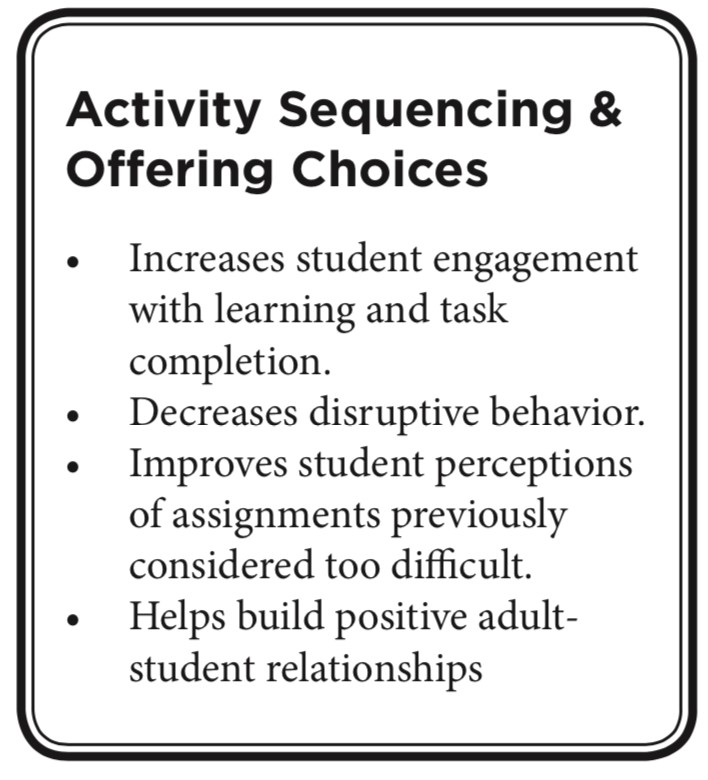This lesson describes using Activity Sequencing and Student Choice. The practices discussed so far in this course have addressed increasing instructional time and student engaged time. However, the element of personal motivation or, “I just don’t want to do the task,” may not be sufficiently addressed through the earlier engagement strategies and can be an issue for some students.
Learning Objectives:
- Discuss and plan for using Activity Sequencing
in the classroom including:
- Task Interspersal
- Behavior Momentum
- Discuss and plan for using Student Choice in the classroom
Reflective Question:
- How can we engage students who have the knowledge and skills to successfully do their work, but don’t?
Defining Terms
Activity Sequencing – Intentionally planning instructional tasks, activities, or requests to promote learning and encourage expected behavior
Task Interspersal – A simple strategy of interspersing tasks that have already been mastered with new and/or more challenging material
Behavior Momentum – Using the momentum of easier tasks or requests to build energy or motion to complete requests or activities of greater difficulty
Student Choice – Intentionally planning for providing options to students such as method of response, tools and supplies, working independently or with peers, order of tasks, location for working, etc.
For those students who can do the assigned academic work, but do not choose to do it, activity sequencing and choice strategies may be helpful. Researchers have found that students are more likely to engage with tasks and be less likely to misbehave when they perceive the assignments as doable and they are provided choices regarding their assignments.

Self-determination theory includes three needs individuals must fulfill to behave with intrinsic motivation:
Competence: succeeding in what is to be done, belief in one’s ability to succeed, self-efficacy
Relatedness: connecting with others, belonging
Autonomy: being in control of ones’ life, self-determination
When teachers intentionally plan for students to have opportunities to experience success, gain confidence, make choices, and have a degree of autonomy in their own learning, students are more likely to engage in the learning.

